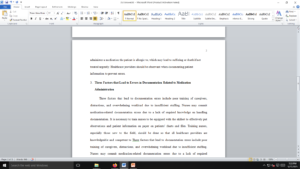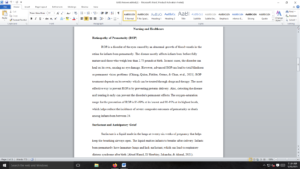Culture and Environment of Safety
Provide your answers to the following questions in a 2-page paper. Use APA Editorial Format for all citations and references used.
- What should the “culture and environment of safety” look like when preparing and administering medications?
- Discuss a common breach of medication administration.
- Identify three (3) factors that lead to errors in documentation related to medication administration.
- What can I do to prevent medication errors?
Requirements: 2pages with 1 page reference
Answer preview
Three factors that lead to documentation errors include poor training of caregivers, distractions, and overwhelming workload due to insufficient staffing. Nurses may commit medication-related documentation errors due to a lack of required knowledge on handling documentation. It is necessary to train nurses to be equipped with the skillset to effectively put observations and patient information on paper on patients’ charts and files. Training nurses, especially those new to the field, should be done so that all healthcare providers are knowledgeable and competent to minimize clinical risks (Farokhzadian, Dehghan & Borhani, 2018). Additionally, distractions at the workplace, such as telephone calls or chats with colleagues, may interfere with the documentation of important information that could be used in medication administration. Caregivers must stay clear of distractions to prevent the omission of data that could be helpful when providing care services to patients. Besides, substantial patient workloads affect operational efficiency, primarily when documenting patient information. Due to the need to attend to other patients and duties, a caregiver may fail to provide complete information about a patient.
[789 Words]

Culture and Environment of Safety


